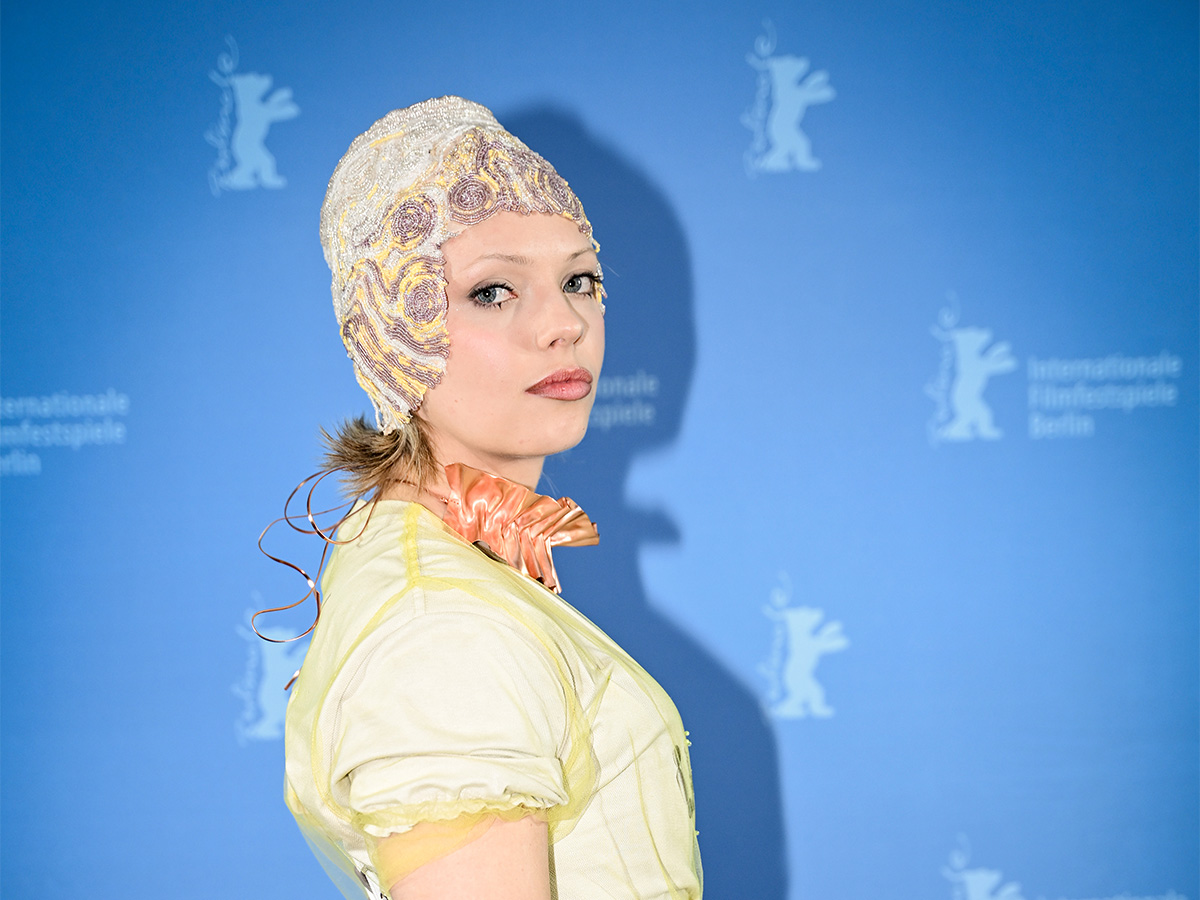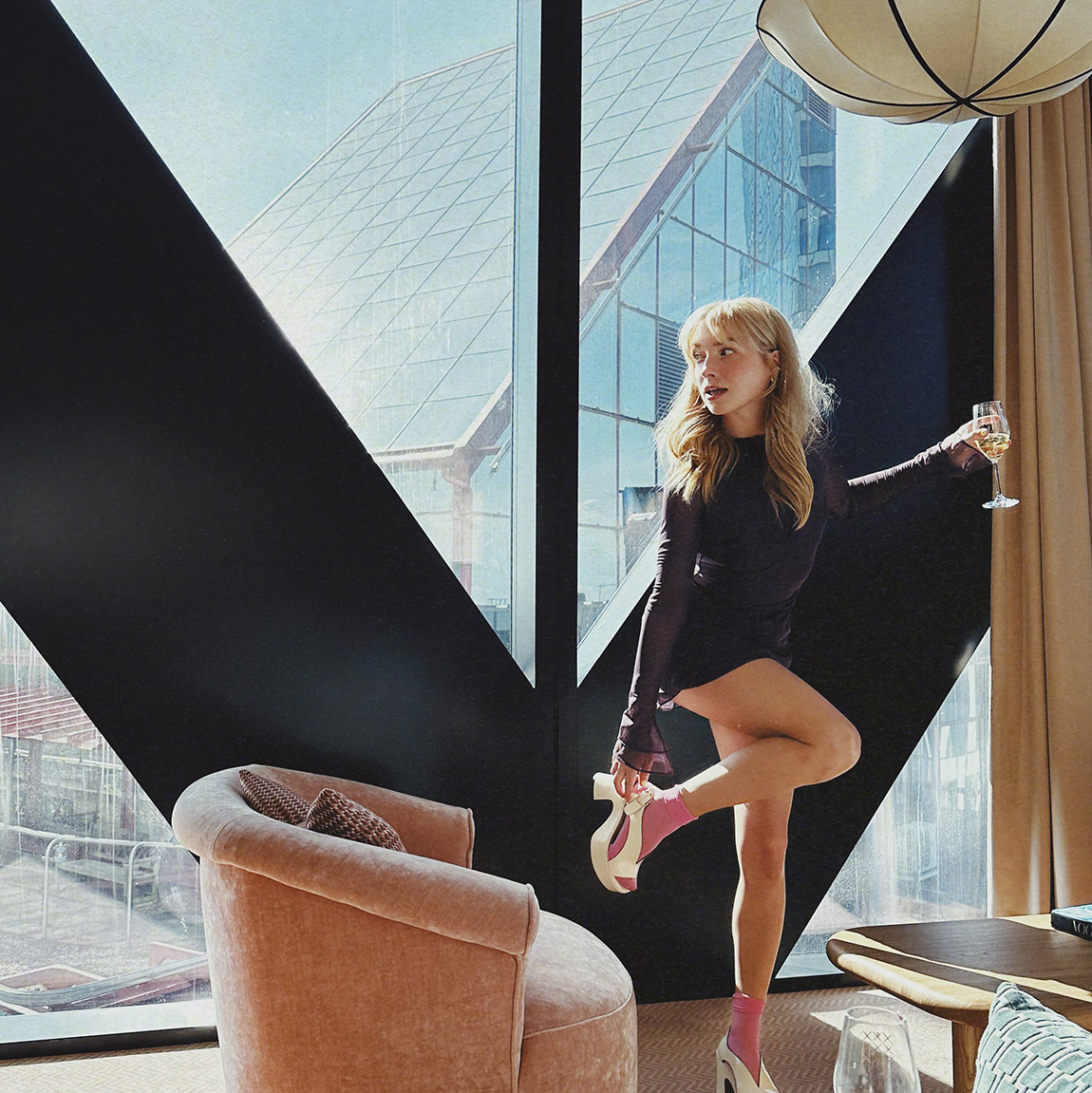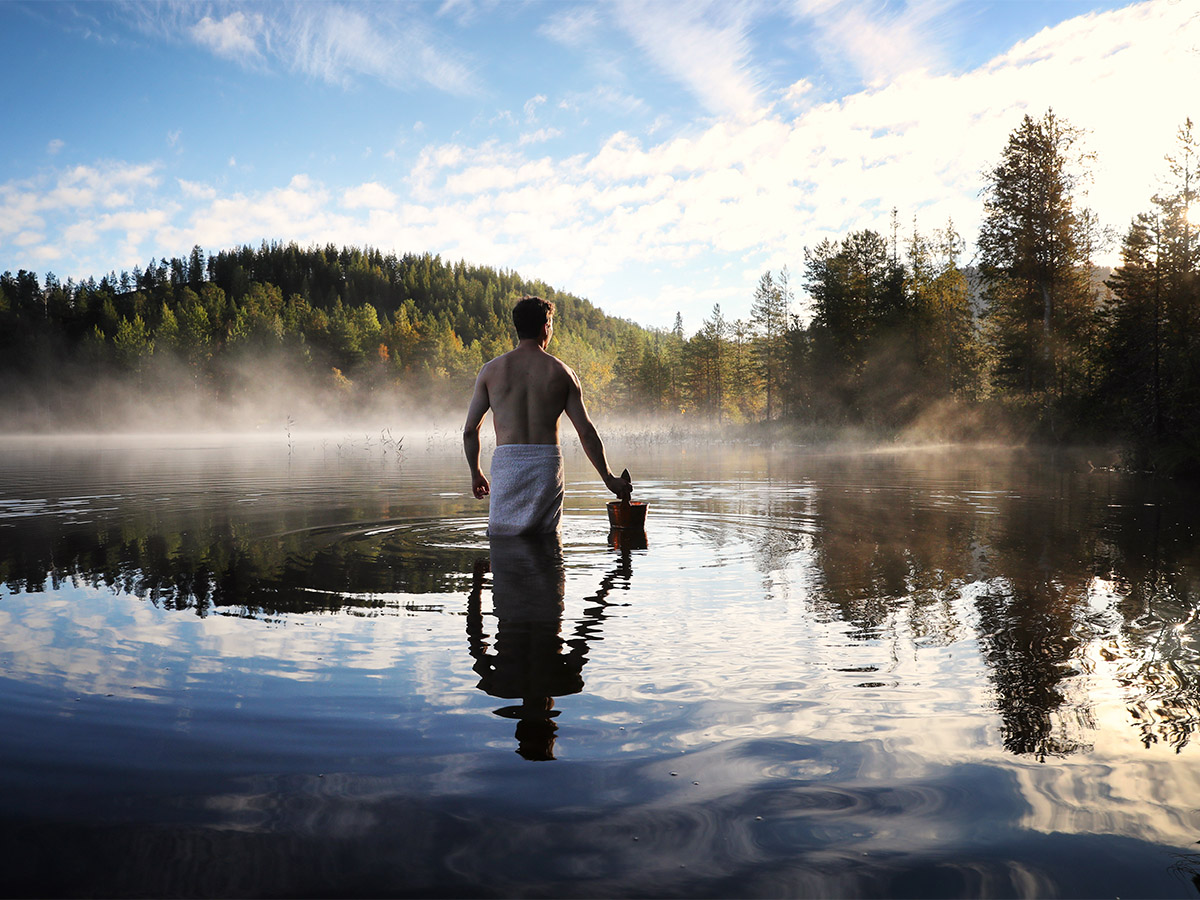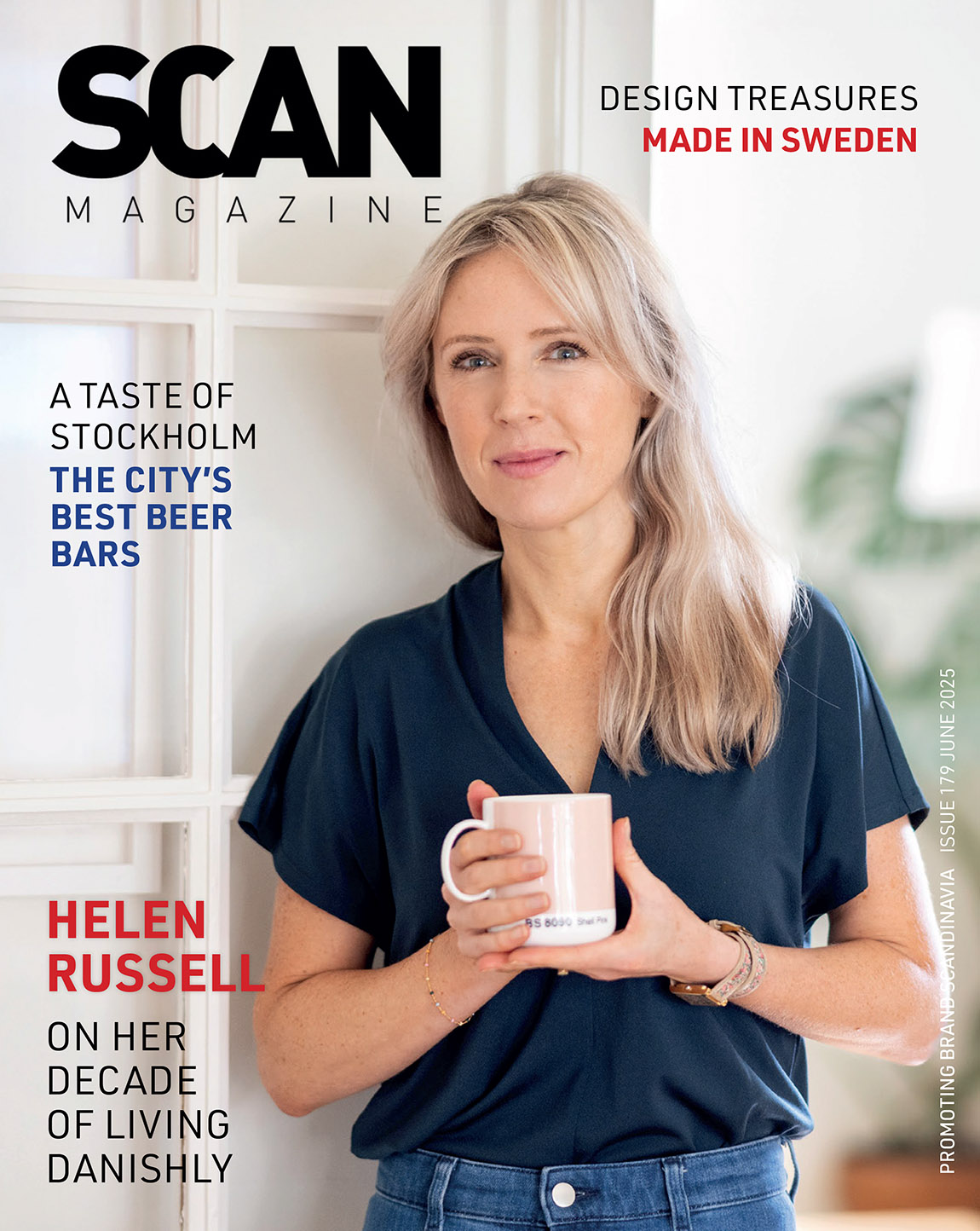Helen Russell’s decade of living Danishly
By Xander Brett
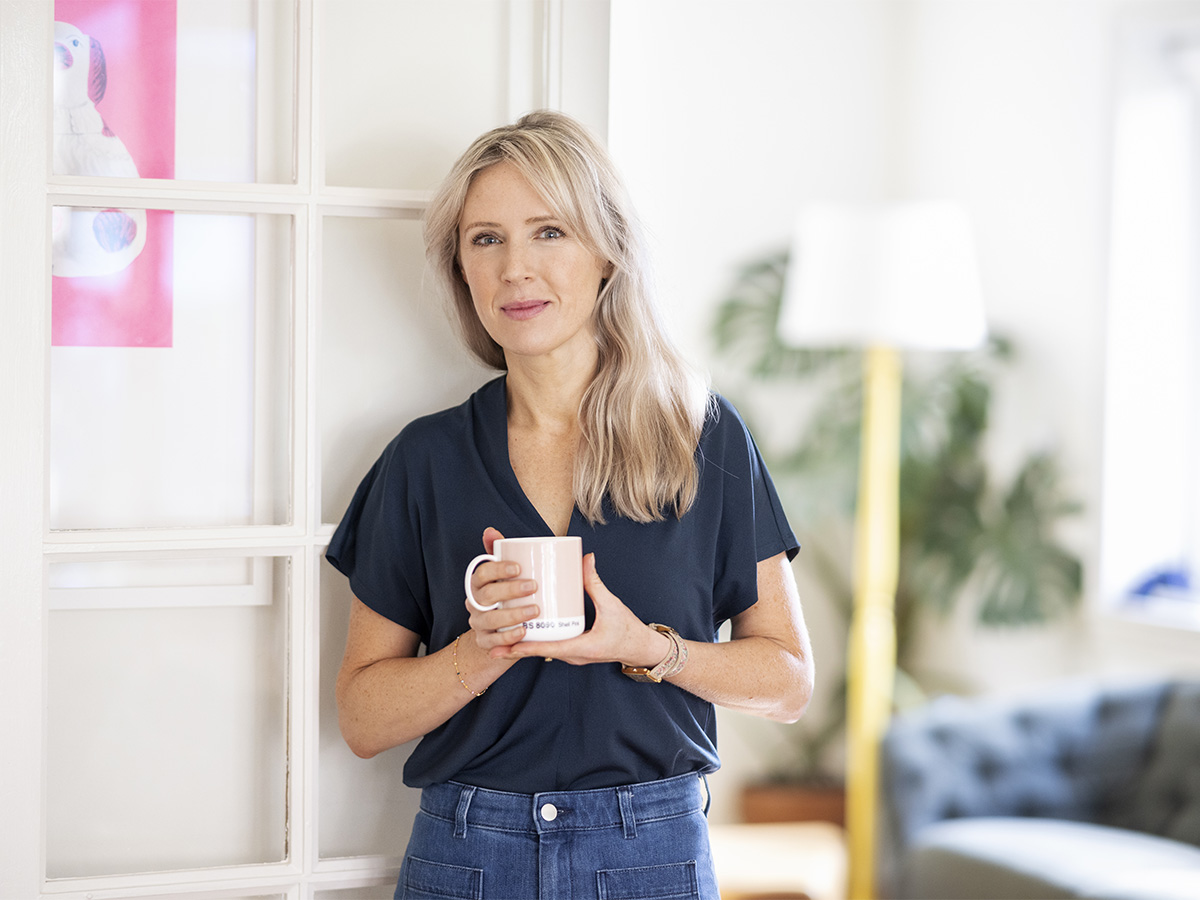
Helen Russell has become an ambassador for Danishness. In 2013, her husband took a job at LEGO’s headquarters in Denmark, and the couple left London for rural Jutland’s ‘Sticksville-on-Sea’. Six books and three children later, she and her husband returned to the UK last year.
Russell chronicled her international experiences in a bestselling book, The Year of Living Danishly: Uncovering the Secrets of the World’s Happiest Country. It was a year, of course, that soon became a decade and a bit.
“It felt strange to come back,” says Russell. “My kids were sad to leave, but although there was so much that I loved in Denmark, it’s starting to feel like home here. I go back quite a lot for work, and in April I returned for the first time with my kids and my husband.”
A former editor of marieclaire.co.uk, swapping stilettos for ‘Sticksville’ required a certain change of mindset.
“We were in Jutland,” Russell explains. “It’s not Copenhagen, the jazzy bit of Denmark that everyone has heard of. I call the first place we lived ‘Sticksville-on-Sea’ because it was so remote and there were so few people. We were there for four years, then we moved to Vejle, which is a beautiful town.”
Born in Denmark, Russell’s children all speak Danish. Russell, however, admits there is work to do when it comes to her and her husband’s proficiency.
“When we went back recently, I was worried about how my children would get along speaking Danish with their friends,” she says. “Actually, it was fine. My daughter barely turned round to wave goodbye before disappearing on a 26-hour playdate with someone she has been friends with since nursery.”
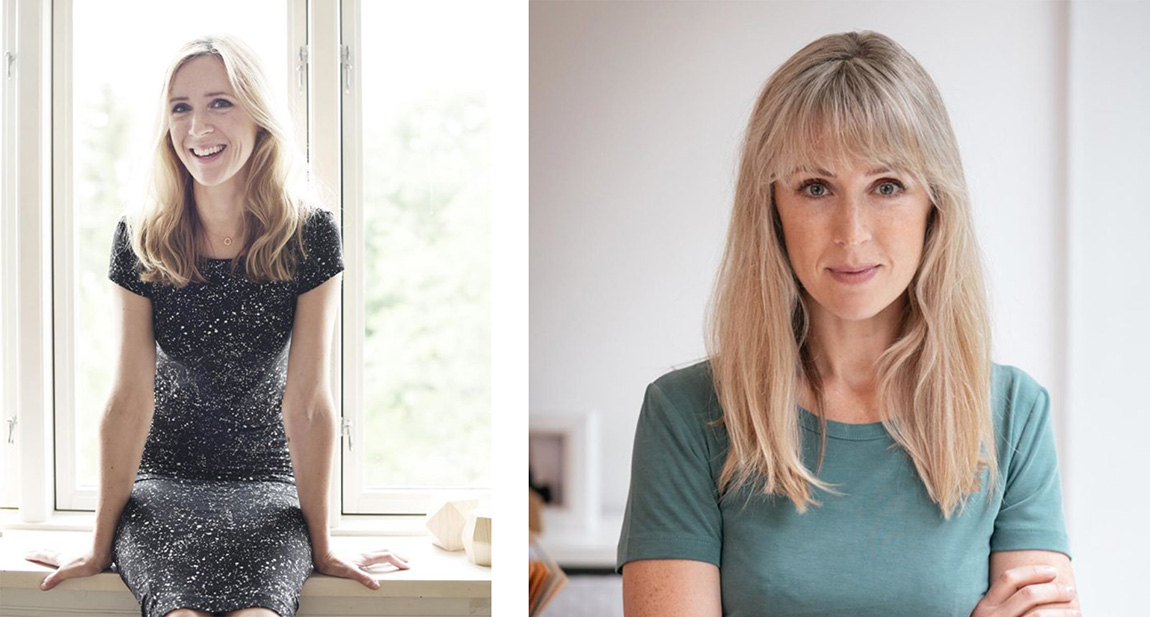
Left: Russell developed her interest in happiness as a result of living in Denmark, consistently ranked one of the happiest countries in the world. Photo: Diana Lovring. Right: How to Be Sad is the title of one of Russell’s books, and she has hosted a podcast series with the same name. Photo: Jonas Normann
A hygge-obsessed home country
With The Year of Living Danishly flying off the shelves, Russell knuckled down as The Guardian’s Scandinavian correspondent. She was also called on by a host of other outlets. The UK was deep in its hygge craze – an obsession with the Danish word that encapsulates all things cosy and convivial – and, as her book’s full title points out, back then Russell’s adopted country sat atop the World Happiness Report’s annual national rankings.
“I think most Danes were baffled by it,” says Russell of the UK’s hygge fascination. “Hygge is so normal for them. It’s not a fad, but a way of life… something they’ve been living with for hundreds of years. Some Danes were a little frustrated to see it co-opted for marketing purposes. Hygge shouldn’t be an extra expense. You don’t need a special mug or candle.”
As a (now former) Brit abroad, British readers are a pillar of Russell’s readership. The Year of Living Danishly has been followed by a steady stream of successors. First, there was Leap Year: How Small Steps Can Make a Giant Difference. Then came Gone Viking, her debut novel. The Atlas of Happiness: The Global Secrets of How to Be Happy was next, before How to Be Sad: Everything I’ve Learned About Getting Happier, By Being Sad, Better, and How to Raise a Viking: The Secrets of Parenting the World’s Happiest Children, which was released in paperback in February. Her seventh book – a novel, scheduled for publication next year – is in the works.
“My readership is largely in the UK and US,” shares Russell, “but there’s an interest in the Nordic way of life from countries you wouldn’t necessarily expect. I think many people are looking for something different. Scandinavia can offer them that.”
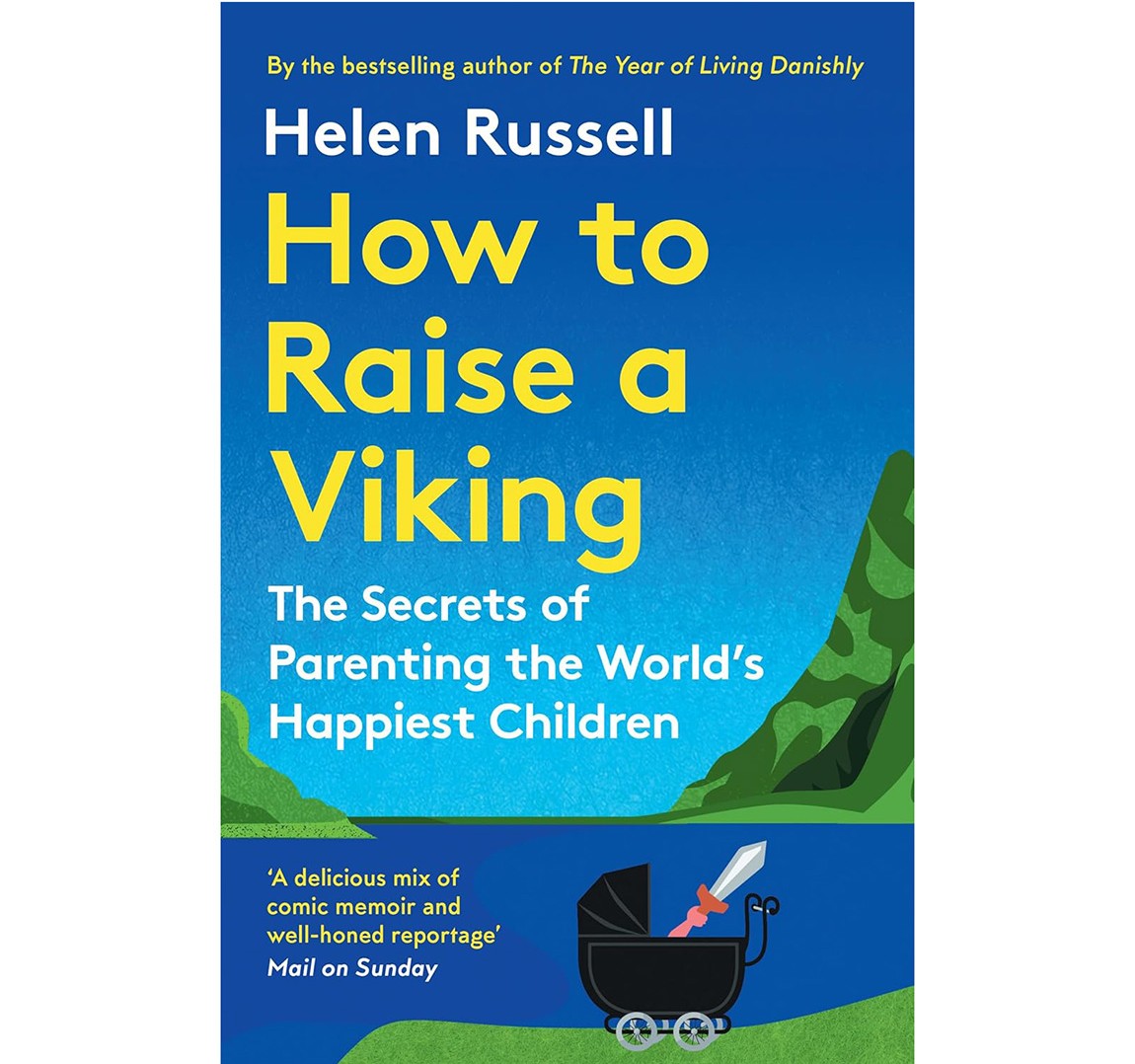
Russell’s latest book, How to Raise a Viking, looks at the Nordic approach to parenting. Photo: Fourth Estate
Growing up the Nordic way
Russell says that Danes have happiness instilled in them from an early age. This is thanks to, she thinks, high levels of trust, something that gives children freedom to engage in play which might seem risky but is often considered healthy and adventurous.
“In The Atlas of Happiness, I looked at happiness concepts around the world,” she explains. “And in How to Raise a Viking, I wanted to find out why the Nordic countries are doing so well, because it’s no coincidence that they top happiness indexes year after year. They have a good work/life balance. People fight for more time, rather than for extra money.”
Spending time outdoors, Russell adds, is vital. That begins at an even younger age, with many Danes parking prams with sleeping babies outside shops and cafés.
“When I arrived, I thought that was madness,” she recalls. “But I did it with my first child, and when I had twins, I discovered that you couldn’t fit a double stroller in most places, so leaving it outside became perfectly normal. Tillid means trust and faith in Danish. Most Danes say they have tillid in their community. Friluftsliv – a belief that fresh air is good for you – is another core philosophy in the Nordic countries. Children spend hours outside in all weathers. In winter they wear flyverdragter or snowsuits that they can zip up themselves by the time they’re about two.”
Contentment away from southern sunshine
Alongside her writing, Russell’s research has formed the basis of a podcast (How to Be Sad with Helen Russell) and a number of talks and lectures.
“I was a researcher at The Sunday Times, then I worked for Marie Claire, so I’d written about lifestyle and culture, but not about happiness specifically,” says Russell. “Something about moving to a cold, dark country that topped happiness polls intrigued me. My interest in happiness was born purely from living in Denmark and looking at what was around me.”
She may have wound up back in Britain, but Russell’s Scandinavian stint has left an indelible mark on her global outlook.
“I didn’t learn much about the region at school, so I was pretty ignorant before I moved there,” she concludes. “Living in Denmark, though, has transformed the way I think about many things. I feel I’ve spent much of my adult life there. My children have always had a bit of a dual identity. They met people in Denmark who I hope they’ll be friends with forever. But there’s lots of Danishness left in me too.”
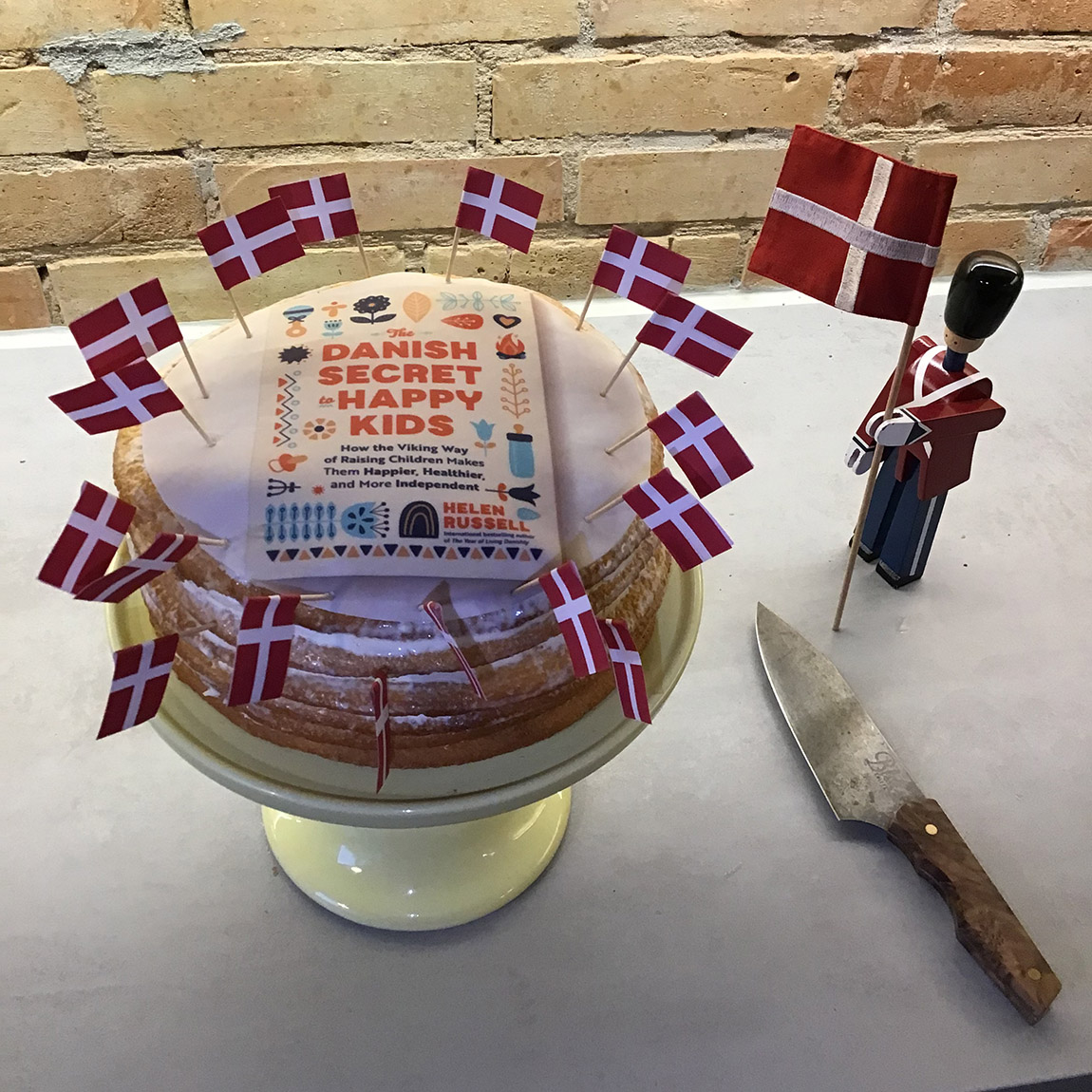
How to Raise a Viking in cake form to celebrate its North American launched. It is published in the US and Canada as The Danish Secret to Happy Kids. Photo: @mshelenrussell
Web: www.helenrussell.co.uk
Instagram: @mshelenrussell
Substack: mshelenrussell
Subscribe to Our Newsletter
Receive our monthly newsletter by email


